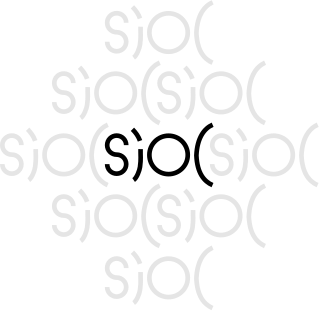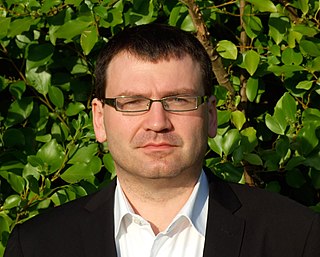Related Research Articles

A semantic network, or frame network is a knowledge base that represents semantic relations between concepts in a network. This is often used as a form of knowledge representation. It is a directed or undirected graph consisting of vertices, which represent concepts, and edges, which represent semantic relations between concepts, mapping or connecting semantic fields. A semantic network may be instantiated as, for example, a graph database or a concept map. Typical standardized semantic networks are expressed as semantic triples.

The Semantic Web, sometimes known as Web 3.0, is an extension of the World Wide Web through standards set by the World Wide Web Consortium (W3C). The goal of the Semantic Web is to make Internet data machine-readable.
In information science, an ontology encompasses a representation, formal naming, and definition of the categories, properties, and relations between the concepts, data, and entities that substantiate one, many, or all domains of discourse. More simply, an ontology is a way of showing the properties of a subject area and how they are related, by defining a set of concepts and categories that represent the subject.

In information systems, a tag is a keyword or term assigned to a piece of information. This kind of metadata helps describe an item and allows it to be found again by browsing or searching. Tags are generally chosen informally and personally by the item's creator or by its viewer, depending on the system, although they may also be chosen from a controlled vocabulary.

FOAF is a machine-readable ontology describing persons, their activities and their relations to other people and objects. Anyone can use FOAF to describe themselves. FOAF allows groups of people to describe social networks without the need for a centralised database.

The Digital Enterprise Research Institute (DERI) is a former research institute at NUI Galway. It is now part of the Insight Centre for Data Analytics. Insight was established in 2013 by Science Foundation Ireland with funding of €75m.
RDFa or Resource Description Framework in Attributes is a W3C Recommendation that adds a set of attribute-level extensions to HTML, XHTML and various XML-based document types for embedding rich metadata within Web documents. The Resource Description Framework (RDF) data-model mapping enables its use for embedding RDF subject-predicate-object expressions within XHTML documents. It also enables the extraction of RDF model triples by compliant user agents.
Simple Knowledge Organization System (SKOS) is a W3C recommendation designed for representation of thesauri, classification schemes, taxonomies, subject-heading systems, or any other type of structured controlled vocabulary. SKOS is part of the Semantic Web family of standards built upon RDF and RDFS, and its main objective is to enable easy publication and use of such vocabularies as linked data.

Semantically Interlinked Online Communities Project is a Semantic Web technology. SIOC provides methods for interconnecting discussion methods such as blogs, forums and mailing lists to each other. It consists of the SIOC ontology, an open-standard machine-readable format for expressing the information contained both explicitly and implicitly in Internet discussion methods, of SIOC metadata producers for a number of popular blogging platforms and content management systems, and of storage and browsing/searching systems for leveraging this SIOC data.
Frames are an artificial intelligence data structure used to divide knowledge into substructures by representing "stereotyped situations". They were proposed by Marvin Minsky in his 1974 article "A Framework for Representing Knowledge". Frames are the primary data structure used in artificial intelligence frame languages; they are stored as ontologies of sets.
In computer science, the semantic desktop is a collective term for ideas related to changing a computer's user interface and data handling capabilities so that data are more easily shared between different applications or tasks and so that data that once could not be automatically processed by a computer could be. It also encompasses some ideas about being able to share information automatically between different people. This concept is very much related to the Semantic Web, but is distinct insofar as its main concern is the personal use of information.
Giant Global Graph (GGG) is a name coined in 2007 by Tim Berners-Lee to help distinguish between the nature and significance of the content on the existing World Wide Web and that of a promulgated next-generation web, presumptively named Web 3.0. In common usage, "World Wide Web" refers primarily to a web of discrete information objects readable by human beings, with functional linkages provided between them by human-created hyperlinks. Next-generation Web 3.0 information designs go beyond the discrete web pages of previous generations by emphasizing the metadata which describe information objects like web pages and attribute the relationships that conceptually or semantically link the information objects to each other. Additionally, Web 3.0 technologies and designs enable the organization of entirely new kinds of human- and machine-created data objects.
A distributed social network or federated social network is an Internet social networking service that is decentralized and distributed across distinct service providers, such as the Fediverse or the IndieWeb. It consists of multiple social websites, where users of each site communicate with users of any of the involved sites. From a societal perspective, one may compare this concept to that of social media being a public utility.
Folksonomy is a classification system in which end users apply public tags to online items, typically to make those items easier for themselves or others to find later. Over time, this can give rise to a classification system based on those tags and how often they are applied or searched for, in contrast to a taxonomic classification designed by the owners of the content and specified when it is published. This practice is also known as collaborative tagging, social classification, social indexing, and social tagging. Folksonomy was originally "the result of personal free tagging of information [...] for one's own retrieval", but online sharing and interaction expanded it into collaborative forms. Social tagging is the application of tags in an open online environment where the tags of other users are available to others. Collaborative tagging is tagging performed by a group of users. This type of folksonomy is commonly used in cooperative and collaborative projects such as research, content repositories, and social bookmarking.
TriX is a serialization format for RDF graphs. It is an XML format for serializing Named Graphs and RDF Datasets which offers a compact and readable alternative to the XML-based RDF/XML syntax. It was jointly created by HP Labs and Nokia.

John Breslin is an Irish engineer and full professor at the University of Galway. He is co-founder of the Irish websites boards.ie and adverts.ie. He co-authored the Irish bestselling book Old Ireland in Colour in 2020 and Old Ireland in Colour 2 in 2021.
Knowledge extraction is the creation of knowledge from structured and unstructured sources. The resulting knowledge needs to be in a machine-readable and machine-interpretable format and must represent knowledge in a manner that facilitates inferencing. Although it is methodically similar to information extraction (NLP) and ETL, the main criterion is that the extraction result goes beyond the creation of structured information or the transformation into a relational schema. It requires either the reuse of existing formal knowledge or the generation of a schema based on the source data.
JSON-LD is a method of encoding linked data using JSON. One goal for JSON-LD was to require as little effort as possible from developers to transform their existing JSON to JSON-LD. JSON-LD allows data to be serialized in a way that is similar to traditional JSON. It was initially developed by the JSON for Linking Data Community Group before being transferred to the RDF Working Group for review, improvement, and standardization, and is currently maintained by the JSON-LD Working Group. JSON-LD is a World Wide Web Consortium Recommendation.

Sebastian Schaffert is a software engineer and researcher. He was born in Trostberg, Bavaria, Germany on March 18, 1976 and obtained his doctorate in 2004.

Stefan Decker is a computer scientist, Full Professor for Database and Information Systems at RWTH Aachen University, and managing director of the Fraunhofer Institute for Applied Information Technology. He specializes in the Semantic Web. As of 25 January 2020, his research reached 21,206 Google Scholar Citations, making him one of the most influential Semantic Web researchers.
References
- ↑ Stephen Downes: The Semantic Social Network. February 14, 2004
- ↑ Marco Neumann, Deirdre Hogan, Carol Reinsford, Stefan Decker, Ciarán MacDonaíll: A University Online Portal for Enterprise Learning Communities. UFHRD/ AHRD 5th International Conference on HRD Research and Practice Across Europe, University of Limerick; May 2004
- ↑ Marco Neumann; Ciarán MacDonaíll; John Breslin; Ina O' Murchu; Stefan Decker; Eamonn McQuade (November 2004). "Sneachta and the PUII-The Semantic Social Network Portal. 3rd International Semantic Web Conference (ISWC2004/Poster Track)" (PDF). Hiroshima, Japan.
- ↑ Marco Neumann; Ina O'Murchu; John Breslin; Stefan Decker; Deirdre Hogan; Ciarán MacDonaíll (2005). "Semantic Social-Network Portal for Enterprise Online Communities". Journal of European Industrial Training. 29 (6): 472–487. doi:10.1108/03090590510610263. S2CID 17127077.
- ↑ Semantic Social Networks: Facebook, Bing Partnership Just One Piece of A Bigger Data Interactions Picture
- ↑ Jason J. Jung and Jérôme Euzenat: Towards Semantic Social Networks . 2007
- ↑ Fatalian, A., Nayeri, Z. A., and Azadnia, M. 2009. Impact of Using Semantic Social Networks on Organizations. In Proceedings of the 2009 international Conference on Advances in Social Network Analysis and Mining - Volume 00 (July 20–22, 2009). International Conference on Advances in Social Networks Analysis and Mining. IEEE Computer Society, Washington, DC, 47-52. doi : 10.1109/ASONAM.2009.13